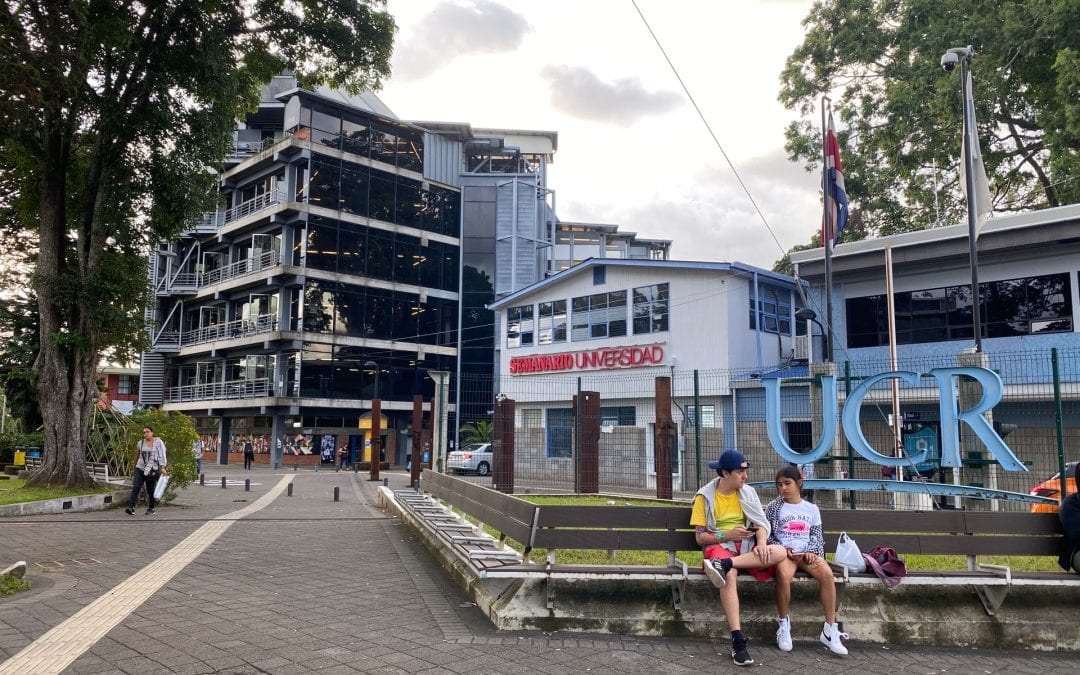Welcome back to another exciting week of adventures in San José! This week I watched a lot of procedures in the hospital and struggled to understand my prepaid SIM card.

Giant Jenga in the Selina kitchen
On Monday morning, we watched a long-term EEG test being set up on a nine year old patient. These studies are typically done for children with epilepsy in order to observe where in the brain a seizure is occurring. The children will come to the hospital for about a week and stop taking any anticonvulsant medications they typically use. If they have a seizure, it can then be observed in a safe setting. Once the doctors have more data about where a patient’s seizures originate, they can do more localized studies on the brain and determine if a particular patient would be a good candidate for surgery to relieve their epilepsy. The preparation for these tests takes close to an hour. There are 16 electrodes that need to be placed on the head, and each one takes several minutes. First, the scalp must be cleaned with an exfoliating gel and the hair parted to the side to expose the scalp. Then, the electrode is stuck to the scalp using a thick, electrically conductive cream. Next, a piece of gauze soaked in collodion is placed over the electrode to keep the cream from drying out. Finally, the gauze is dried with air from the wall hose. I certainly would not want to sit for that long for the preparation, and then have to spend a week with wires coming out of my head. The patient we were observing was pretty fidgety, which is very understandable for a nine year old boy. Now that the week is done, I’ve been wondering how he’s doing and what the results of his study were.
In the afternoon, Pablo and I ran around several different locations trying to reload my prepaid SIM card. I had thought that we had a certain amount of data to use for as long as it lasted, but it turns out the plans only last for 30 days, which explains why I was having trouble connecting to Internet, even though I didn’t think I had used that much data. The first mini mart we went to wasn’t very helpful in explaining the different options to reload the card, so we went to the Claro store on Avenida Central. Unfortunately, they also weren’t able to reload my card because their computer system was down. Finally, we went to a different Claro customer service center on the same street and I was able to get a new 30 day plan. It was a long process, however.
Later in the week, we watched more patient consults in Dr. Bogantes’ office. On Tuesday, he and one of his orthopedist partners held appointments with children with various neuromuscular disorders, such as Duchenne muscular dystrophy. They tested the children’s strength and range of motion, and discussed the importance of orthopedic braces. On Wednesday, he performed Doppler ultrasound tests on children with sickle cell disease. These tests are part of a national outreach program that the hospital conducts to assess these children’s risk of stroke. In the afternoon, we had a very cool experience in the UCR cadaver lab! Dr. Bogantes had been explaining to us the difficulties in removing blood clots from the brain. A lot of the difficulty stems from the fact that the vessels in the brain have lots of twists and turns, and the catheters used aren’t flexible enough to follow those winding paths. He showed us several real brains and demonstrated the procedure for us. It was so crazy to see an actual brain! All of a person’s thoughts and emotions, existing in a small piece of tissue and nerves that conduct electricity.

Stylish outfits in the lab
After this long week, it’s been nice to relax today. We are thinking of cooking as a group tonight, with cilantro lime chicken on the menu. Stay tuned for more updates!

